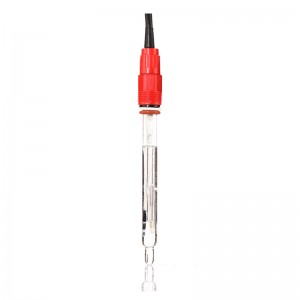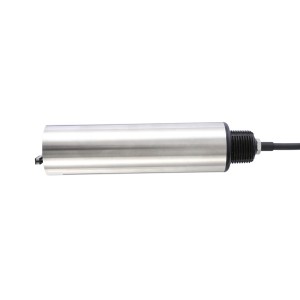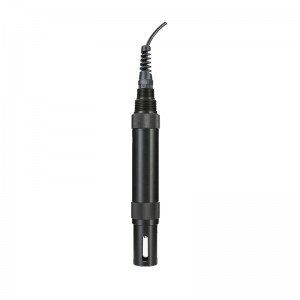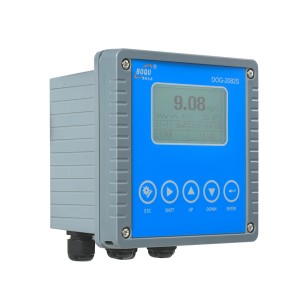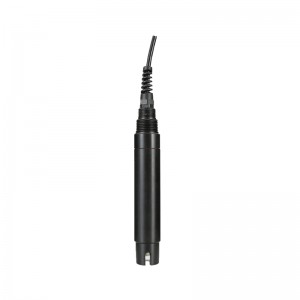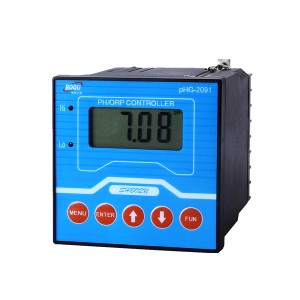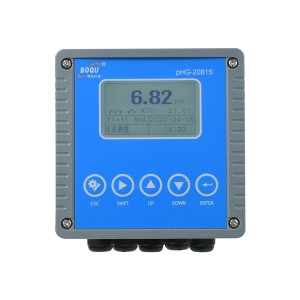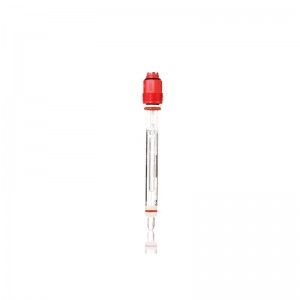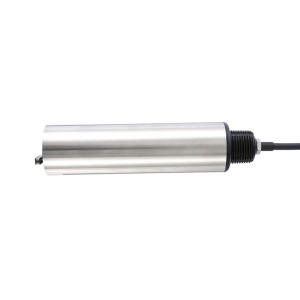Dissolved oxygen (DO) measurement is crucial in various industries, including environmental monitoring, wastewater treatment, and aquaculture. Two popular types of sensors used for this purpose are galvanic and optical dissolved oxygen sensors. Both have their own set of advantages and disadvantages, making them suitable for different applications. In this article, we will explore the Galvanic vs Optical Dissolved Oxygen Sensors, with a focus on their features, benefits, and drawbacks.
Galvanic Dissolved Oxygen Sensors: Galvanic vs Optical Dissolved Oxygen Sensors
A. The Basics of Galvanic Sensors:
The Galvanic Dissolved Oxygen Sensor is a classic technology used to measure the concentration of dissolved oxygen in liquids. It operates on the principle of electrochemical reactions. The sensor consists of two electrodes – a working electrode and a reference electrode – submerged in the water. These electrodes are separated by a gas-permeable membrane, usually made of Teflon, which allows oxygen to pass through and reach the working electrode.
B. How It Works:
The working electrode initiates an electrochemical reaction with the oxygen, leading to the generation of a small electric current. The magnitude of this current is directly proportional to the concentration of dissolved oxygen. The sensor’s internal circuitry measures this current and provides a corresponding dissolved oxygen reading.
C. Advantages of Galvanic Dissolved Oxygen Sensors:
1. Fast Response Time: Galvanic sensors are known for their rapid response time. They can provide real-time data, making them ideal for applications where quick measurements are essential, such as in aquaculture.
2. Low Maintenance: These sensors require minimal maintenance. They do not need calibration, making them cost-effective and hassle-free for long-term monitoring.
3. Wide Range of Applications: Galvanic sensors can be used in both fresh and saltwater environments, making them versatile and adaptable to various settings.
D. Disadvantages of Galvanic Dissolved Oxygen Sensors:
1. Limited Lifespan: Galvanic sensors have a finite lifespan, typically ranging from several months to a few years, depending on the application. They must be replaced when their life span is reached.
2. Consumption of Oxygen: These sensors consume oxygen during the measurement process, which can affect the sample environment and may not be suitable for applications where minimal disturbance is required.
3. Interference from Other Ions: Galvanic sensors are sensitive to interference from other ions in the water, potentially leading to inaccurate readings.
Optical Dissolved Oxygen Sensors: Galvanic vs Optical Dissolved Oxygen Sensors
A. The Basics of Optical Sensors:
Optical Dissolved Oxygen Sensors, on the other hand, take a fundamentally different approach to measuring oxygen concentration. These sensors utilize luminescent dyes embedded in a sensing element. When this element comes into contact with oxygen, it triggers a luminescent reaction.
B. How It Works:
The luminescent dye emits light when excited by an external light source. Oxygen quenches this luminescence, and the degree of quenching is directly related to the dissolved oxygen concentration. The sensor detects the changes in luminescence and calculates the dissolved oxygen levels accordingly.
C. Advantages of Optical Dissolved Oxygen Sensors:
1. Long Lifespan: Optical sensors have a longer lifespan compared to galvanic sensors. They can last for several years without requiring frequent replacement.
2. No Oxygen Consumption: Optical sensors do not consume oxygen during measurement, making them suitable for applications where minimal disturbance of the sample environment is critical.
3. Minimal Interference: Optical sensors are less susceptible to interference from other ions in the water, leading to more accurate and stable readings.
D. Disadvantages of Optical Dissolved Oxygen Sensors:
1. Slower Response Time: Optical sensors generally have a slower response time compared to galvanic sensors. They may not be suitable for applications where real-time data is essential.
2. Higher Initial Cost: The initial investment for optical sensors is typically higher than that of galvanic sensors. However, the longer lifespan may offset this cost in the long run.
3. Sensitive to Fouling: Optical sensors can be susceptible to fouling, which may require periodic cleaning and maintenance, especially in applications with high levels of organic matter or biofouling.
Applications of Galvanic and Optical Dissolved Oxygen Sensors
A. Galvanic Dissolved Oxygen Sensors: Galvanic vs Optical Dissolved Oxygen Sensors
Galvanic vs Optical Dissolved Oxygen Sensors: Galvanic sensors are widely used in various applications, including aquaculture, wastewater treatment, environmental monitoring, and research laboratories. Their robustness and simple operation make them suitable for continuous monitoring in harsh conditions.
Galvanic sensors are well-suited for applications that require rapid measurements and do not demand long-term stability. Some common applications include:
1. Aquaculture: Monitoring dissolved oxygen levels in fish tanks and ponds.
2. Environmental Monitoring: Quick assessments of DO in natural water bodies.
3. Portable Instruments: Handheld devices for spot-checks in the field.
B. Optical Dissolved Oxygen Sensors: Galvanic vs Optical Dissolved Oxygen Sensors
Optical sensors are known for their precision and low maintenance requirements. They are particularly suitable for applications where high accuracy is crucial, such as in the pharmaceutical and food and beverage industries. Additionally, they are favored for applications where rapid changes in dissolved oxygen levels need to be monitored.
Optical sensors find their niche in applications where long-term stability, accuracy, and minimal sample interference are paramount. Some key applications include:
1. Wastewater Treatment: Continuous monitoring in wastewater treatment plants.
2. Industrial Processes: Control and monitoring of various industrial processes.
3. Research and Laboratories: Precise measurements for research and scientific experiments.
The Choice Depends on the Application: Galvanic vs Optical Dissolved Oxygen Sensors
The choice between Galvanic and Optical Dissolved Oxygen Sensors depends on the specific needs of the application. For continuous monitoring in relatively stable environments, Galvanic sensors can offer cost-effective and reliable solutions. On the other hand, when precision and rapid response are critical, optical sensors are the go-to choice.
Shanghai Boqu Instrument Co., Ltd.: Galvanic vs Optical Dissolved Oxygen Sensors
Manufacturers like Shanghai Boqu Instrument Co., Ltd., play a crucial role in advancing sensor technology. They offer a wide range of both Galvanic and Optical Dissolved Oxygen Sensors to cater to diverse monitoring requirements. Their products undergo rigorous testing and adhere to international quality standards, ensuring the accuracy and reliability of the data they provide.
Conclusion
In conclusion, the choice of Galvanic vs Optical Dissolved Oxygen Sensors depends on the specific requirements of the application. Galvanic sensors offer fast response times and low maintenance but have limitations in terms of lifespan and susceptibility to interference. On the other hand, optical sensors provide long-term stability and accuracy, making them ideal for applications where these qualities are essential, but they may have a slower response time.
Shanghai Boqu Instrument Co., Ltd. is a reputable manufacturer of both galvanic and optical dissolved oxygen sensors. They offer a range of options to suit various industries and applications, ensuring that customers can find the right sensor for their needs. When selecting a dissolved oxygen sensor, it’s important to consider the specific demands of the application to make an informed choice that will deliver accurate and reliable measurements over time.
Post time: Oct-20-2023



